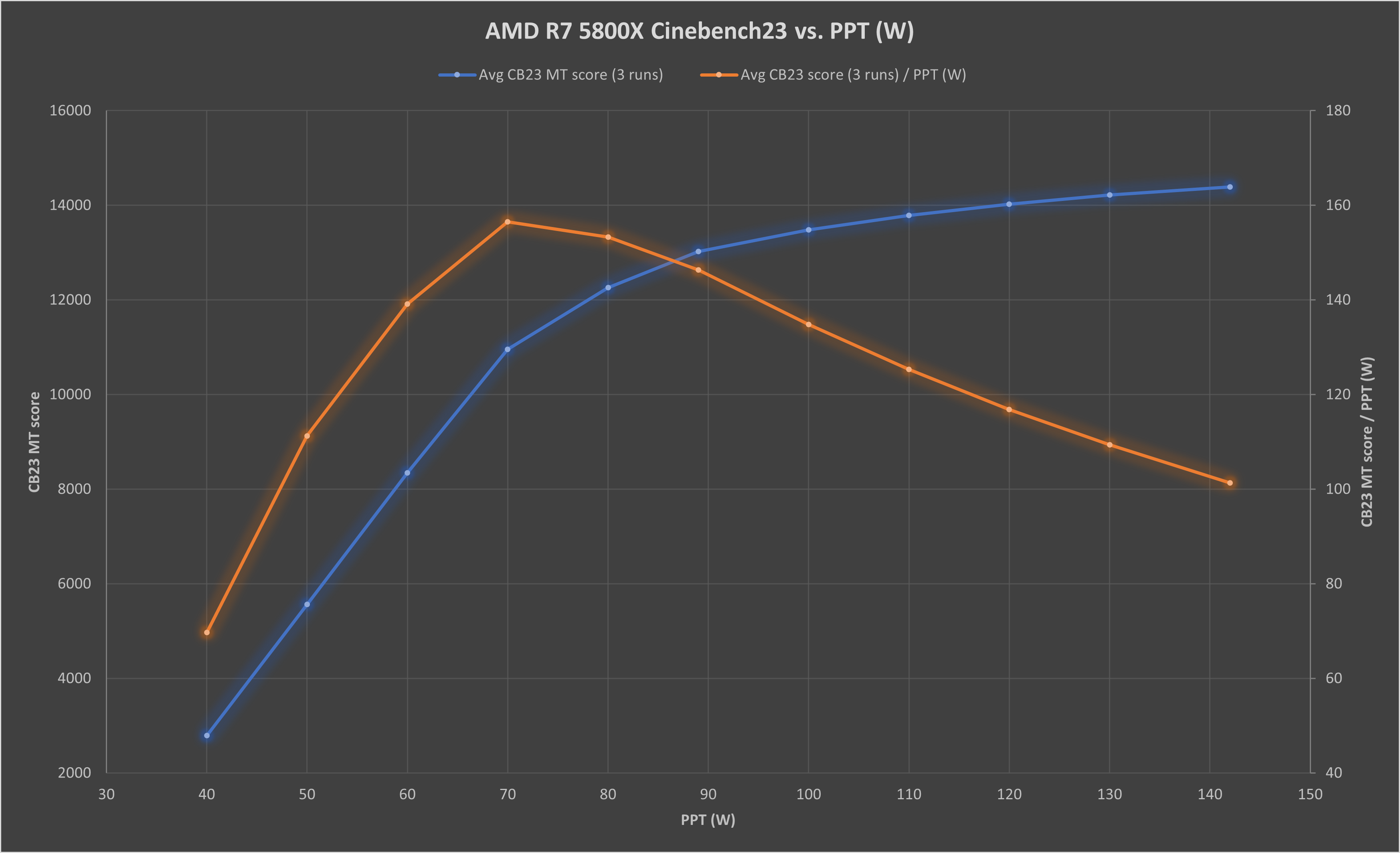AMD Ryzen 7 5800X PPT testing
Recent processors by both AMD and Intel have modifiable power limits and tend to run far beyond the efficiency sweet spot in order to achieve maximum performance with more or less acceptable power use.
By lowering said limit, represented in AMD’s case by the Package Power Tracking limit, which limits the power used by all the CPU’s components, including the compute cores and the IO-die, it’s generally possible to clearly reduce power use, and thus heat to be dissipated, with a somewhat small loss in total performance.
To get a feeling for what could be achieved with my 5800X CPU I ran Cinebench 23 multi-threaded three times for every PPT setting from 40 W to the default value of 142 W, at steps of 10 W, with the exception of 90 W, since this would have been close to AMD’s ECO mode, which includes a PPT limit of 89 W.
ECO Mode also lowers two current limits, called TDC (“Thermal Design Current”) and EDC (“Electrical Design Current”), from the default values of respectively 95 A and 140 A to 60 A and 90 A. The higher default values were kept unchanged for every PPT value except ECO mode, where these current limits were not being hit anyway, at least according to Ryzen Master, which was used for monitoring purposes.
PPT, TDC and EDC are part of AMD’s Precision Boost Overdrive 2 technology, a good explanation of which can be found here.
The results, including the average score of the three Cinebench runs and the same average divided by the PPT power, are reported in the following table and plot.
| PPT (W) | Avg CB23 MT | Score/PPT | Remarks |
|---|---|---|---|
| 40 | 2790 | 69,74 | |
| 50 | 5565 | 111,29 | |
| 60 | 8348, | 139,14 | |
| 70 | 10957 | 156,52 | |
| 80 | 12265 | 153,31 | |
| 89 | 13021 | 146,31 | Eco mode |
| 100 | 13478 | 134,78 | |
| 110 | 13787 | 125,33 | |
| 120 | 14025 | 116,87 | |
| 130 | 14219 | 109,38 | |
| 142 | 14385 | 101,30 | Default limits |
